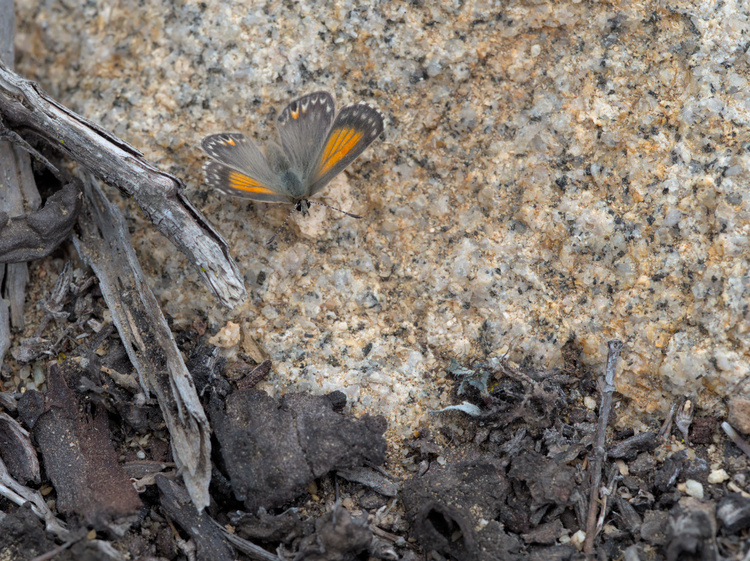The Desert Bloom1 is a phenomenon that occurs when the precipitations on the Atacama Desert are more intense than usual. After the abnormally high rainfall, the seeds, that have waited years for proper conditions, bloom and fill with life the most driest desert in the world.
I always had heard stories about the Desert Bloom from my relatives from Vallenar, but I never had the chance to see for myself until this year.
How does this relate to a wide angle lens?
My plan to photograph this trip was to take close-ups of the flowers with my (not so) ol’ and (very) trusty macro lens2 and a few takes on the landscape with a normal lens3. However, I just received my copy of the ultra wide angle4 manufactured by Laowa for the m4/3 system: the 7.5mm f25. I couldn’t lose this opportunity to experiment with the new perspective that this lens gave me, so I modified the original plan to see what could I learn.
As my first example, we have the garra de león (lion’s claw) flower. This endemic species has a very particular structure: its blossoms are at the end of a long stem. If we take a close up of the blossom (using our trusty macro lens, for example), we lose the interesting stem. On the other hand, if we capture the entire flower using a normal perspective, the blossom loses protagonism. Here is where a wide angle lens starts to shine: we can maintain the protagonism of closer objects at the same time that we have context in the scene.
Another thing that I like of the more extreme perspective of these lenses is that we can use parts of the subject as leading lines to guide the viewers eye to it. As a example, we can leave a stem, leaf or branch of a flower or a plant in the corners of our frame to get that effect.
What happens now if I have an interesting sky that I also would like to capture in my photo? Our (already) trusty wide-angle lens gains another point in its favour, because we can use the distortion that it has in the corners to make the clouds lead our eyes to the center of the scene6.
Finally, the epicness effect that we obtain by taking photos from a lower angle becomes more notorious with a wide-angle lens. Although this is usually seen in people portraits or architecture photography, it also has its merits when we photograph small subjects.
Yet having said all of this, it is always good to have your ol’ trusty macro lens with you, as you always find surprises in the small world thanks to it.








